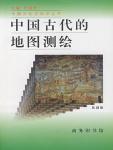Chapter 1 Stunning discoveries in Mawangdui Han and Fangmatan Qin tombs
In 1973, the excavation of Han Tomb No. 3 Mawangdui in the eastern suburbs of Changsha City, Hunan Province was underway.When the archaeologists took out a lacquer dowry from the east side of the coffin chamber, they found a pile of rotten and broken pieces of silk inside.But on this bean curd-like shard, the ink was faintly visible, so it was carefully preserved.Soon, this pile of silk sheets was carefully restored by the Forbidden City's framers.They uncovered the silk sheets layer by layer, then spliced and glued the fragments one by one, and finally pasted them into 32 silk sheets with a length of 24 cm and a width of 12 cm.After repeated splicing by experts, it was found that it was a map of 96 cm in length and width.Since the owner of the tomb was buried in the twelfth year of Emperor Wen of the Western Han Dynasty (168 BC), it is certain that this ancient map has a history of at least 2,100 years.
This is truly an astonishing discovery that shook the world!
Because before this, the oldest map of China that we can see is the "Nine Regions Shouling Map" carved on a stone in the early 12th century AD (discovered in Confucian Temple, Rong County, Sichuan Province in 1964), which is more than 1,300 years later than this map.The earliest surviving printed map was published in AD 1155, more than 1,400 years after this one.
What is even more astonishing is that the accuracy of this map of the Western Han Dynasty is quite high, and the drawing method of the mountains is close to the modern contour line, which is better than the drawing method often used from the Song Dynasty to the Ming and Qing Dynasties; the accuracy of the main area is not only Compared with the various maps before the adoption of modern surveying and mapping technology, it is not inferior to the "Great Qing Unified Map" drawn on the basis of actual measurements in the Qing Dynasty.
Pei Xiu (AD 223-271), a cartographer in the Western Jin Dynasty, could no longer see the maps of the early Western Han Dynasty, and some of the maps he saw in the Han Dynasty were neither scaled nor accurate, and even the famous mountains and rivers were not drawn completely, so He thinks the maps lack reference value.With the evaluation of this authoritative scholar, later generations generally think that the map of the Han Dynasty is much behind that of the early Western Jin Dynasty.The discovery of the ancient map of the Mawangdui Han tomb completely overturned Pei Xiu's conclusion.
Not only the history of map surveying and mapping in China needs to be rewritten, but the history of map surveying and mapping in the world also needs to be rewritten, because no earlier and more accurate maps have been found in the world. Of course, the ancient map of Mawangdui Han Dynasty should become the map of the world A glorious page in history.
The map of the Mawangdui Han Tomb also reminds us that the achievements of ancient Chinese map surveying and mapping must not be underestimated, and there may be earlier or more accurate ancient maps buried in the land of the motherland.
Sure enough, according to the report of Dangchuan Forest Farm workers of the Xiaolongshan Forestry Bureau in Tianshui City, Gansu Province, cultural relics and archaeologists in Gansu Province discovered 15 Qin and Han tombs in Fangmatan, Tianshui from June to September 1986, among which the largest Seven maps painted on pine boards were unearthed in Tomb No. 1.According to identification, these maps were drawn in the late period of King Qin Huiwen of the Warring States Period (1st century-1920 BC), one and a half centuries earlier than the Mawangdui map, and are the earliest map objects discovered so far in my country.The oldest map with a strict sense that has been discovered in the world is the map in the book "Geography" of Ptolemy (AD?-168) in the Roman Empire in the 2nd century AD.Even without considering whether the map in it is the original drawing of the original book, it is nearly 5 centuries later than the map of Fangmatan.It is no exaggeration to say that the maps of Mawangdui and Fangmatan not only added a new chapter to the history of cartography and science and technology in China, but also rewrote the history of cartography and science and technology in the world.
Map surveying and mapping is an important part of ancient Chinese science and technology. The achievements in this area are the important contributions of our ancestors to human civilization and are our treasured heritage.
What this book is about is an overview of maps and map surveying in ancient China.

